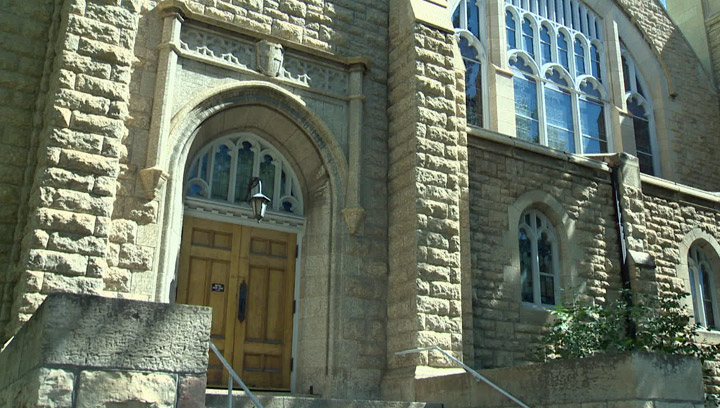The iconic Third Avenue United Church is closer to becoming Saskatoon’s next municipal heritage property.

The municipal heritage advisory committee said at a meeting on Wednesday it will support city council to have administration start the designation process.
READ MORE: Wanuskewin Heritage Park aiming for UNESCO designation
Once city council gives approval, a bylaw will be drafted to designate the property as a municipal heritage property.
“The church represents a legacy of buildings in Saskatoon that reflect the aspirations of the city’s early citizens and it played a central role in Canada’s cultural, social and political life,” said Lesley Anderson, the city’s director of planning and development.
Construction of the church was started in 1911 by the Westside Methodist congregation and has played host to a number of events, including a meeting in 1923 that eventually lead to the creation of the Saskatchewan Wheat Pool.
“With its many community uses over the years, Third Avenue United Church has remained a landmark in the city and, in many ways, is a symbol of Saskatoon’s development,” Anderson said.
The building had previously been given favourable heritage evaluations in 2003 and 2013.
READ MORE: New Traffic Bridge in downtown Saskatoon ready for first span
Under the Heritage Property Act, the city does not need the owner’s permission to pass a bylaw designating the building as a municipal heritage property.
“While the property owner isn’t pursuing a designation of the church at this time, the building has and does face changes in ownership,” Anderson explained.
“This reality poses a potential risk to its character-defining elements, its future use and viability.”
The committee is asking that any designation to include the exterior and interior elements, including the hammer-beam rafters, the Cassavant organ and the acoustic functionality of the structure.
The city’s civic heritage policy provides grants for 50 per cent of restoration costs related to heritage architectural elements to meet building code requirements, up to a maximum of $150,000 over a ten-year period.
- ‘Shock and disbelief’ after Manitoba school trustee’s Indigenous comments
- Several baby products have been recalled by Health Canada. Here’s the list
- Canadian food banks are on the brink: ‘This is not a sustainable situation’
- Invasive strep: ‘Don’t wait’ to seek care, N.S. woman warns on long road to recovery




Comments